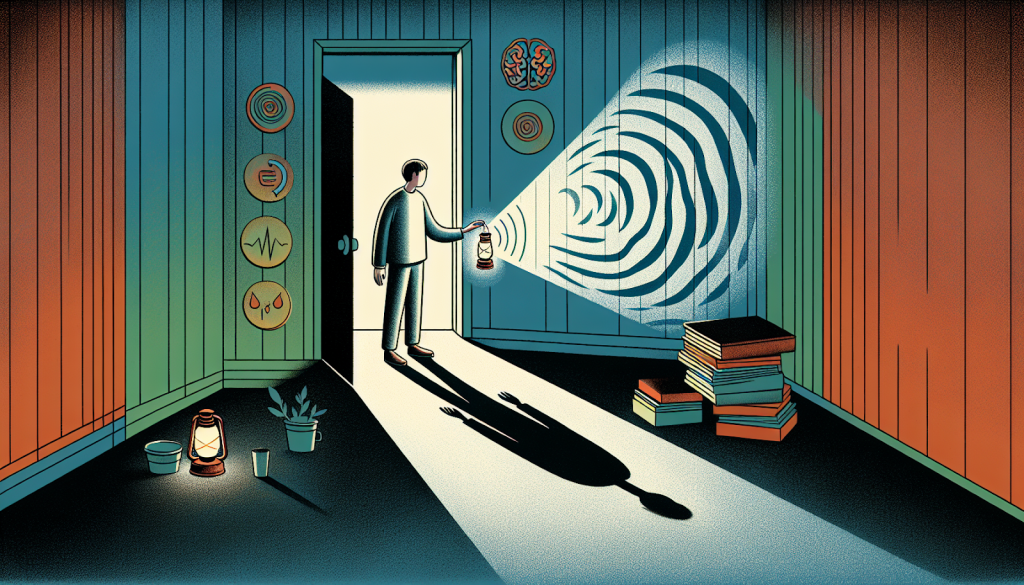If you’re looking for guidance on how to help a hoarder, you’ve come to the right place. Hoarding is a mental health disorder that can overwhelm not just the sufferer but also their loved ones. This article will provide you with actionable steps and understanding to tackle this complex issue. We’ll explore recognizing the condition, initiating a supportive conversation, and creating a plan for positive change without causing further distress.
Key Takeaways
- Hoarding is a recognized mental health issue, marked by an excessive attachment to possessions and significant difficulty in discarding items, which often leads to severely cluttered living spaces and isolation.
- Empathetic support, respecting autonomy, and gradual steps in decluttering are recommended strategies for assisting hoarders, emphasising the importance of acknowledging small victories and harm reduction rather than immediate, drastic changes.
- Professional help, such as Cognitive Behavioral Therapy, alongside the support of family, friends, and community resources, plays a critical role in the long-term management and recovery from hoarding disorder.
Understanding Hoarding: A Mental Health Challenge

As a recognized mental health problem, hoarding involves excessive attachment to belongings and difficulty discarding items, regardless of their value. It’s not just about clutter; it’s about the intense compulsions that exceed normal collecting tendencies. Many hoarders may be unaware they have a mental illness or too ashamed to seek help, leading to unmanaged clutter that hinders their everyday life. Understanding mental disorders like hoarding can help in providing appropriate support and intervention.
The quality of life can significantly deteriorate due to hoarding, as it creates barriers in the use of household spaces and leads to feelings of isolation and loneliness. In regions like Australia, and specifically New South Wales, hoarding is recognized as a mental health condition. This societal shift is an encouraging step towards better support and recognition of the associated risks to health and safety. It’s important to consult a mental health professional for diagnosing and treating hoarding disorder, as they can offer the necessary guidance and resources for recovery.
The Psychological Roots of Hoarding
Upon close examination, it becomes apparent that hoarding disorder often originates from irrational beliefs about objects, which makes the act of discarding items immensely distressing for the sufferer. The emotional intensity triggered when attempting to discard items, or even throwing things away, can lead to avoidance of decision-making about what to throw away. It’s not just about the physical clutter; it’s about the emotional connection and perceived need to keep items, even if they’re essentially “junk”.
Interestingly, hoarding can also be associated with various other conditions such as:
- mobility problems
- learning disabilities
- severe depression
- psychotic disorders
- obsessive-compulsive disorder
- mental health problems
- hoarding disorders
- hoarding problem
Understanding these triggers can aid in finding healthier behavioural alternatives and prevent further accumulation of items.
Recognising the Signs
The signs of hoarding disorder include:
- Significant restriction of a person’s use of their living spaces
- Impeding regular activities and household functionality
- Difficulty organising possessions
- Clutter obstructing the living environment
Recognizing these signs is the first small stride towards the decision to seek treatment.
The overwhelming accumulation of items can create challenges in managing everyday tasks such as moving around the house or sleeping properly. Early detection is vital for understanding and addressing the issue.
Initiating Support: The Delicate Approach

Empathy and respect for their autonomy are key when offering support to a hoarder. This delicate approach can be the catalyst that encourages their change process. Approaching hoarding in a forceful or judgmental way can harm trust and relationship dynamics, exacerbating family conflict rather than resolving the hoarding behaviour.
Maintain a calm, collected, and tolerant demeanour to facilitate open conversation. This approach lessens the likelihood of resistance or distress and allows for a more positive interaction. As we journey down the path to understanding, we’ll explore some conversation starters and ways to set boundaries.
Conversation Starters
Initiating a conversation about hoarding can present a challenge. Thus, using language that reflects the hoarder’s view of their possessions can build trust during a conversation. Instead of criticising their hoarding behaviours, emphasise safety concerns. This approach can motivate the individual to consider making changes.
Expressing your willingness to assist and work with the hoarder at their own pace can encourage cooperation. Listening to the hoarders articulate their reasoning can help them to open up and facilitate open dialogue. It’s all about finding common ground and dealing with the issue at a pace that’s comfortable for them.
Setting Boundaries
Setting boundaries is crucial when supporting a hoarder to prevent enabling their behaviour. This might include abstaining from offering to store items or paying for storage, as it can make the situation worse. Respect for the hoarder’s attachment to their possessions is crucial, including asking permission before handling their items.
It’s also essential to avoid forcing a hoarder to change their habits or cleaning up for them as it can be counterproductive.
Small Steps Towards Big Change

The process of overcoming hoarding is not instantaneous; it necessitates the establishment of achievable goals and the celebration of small triumphs. These small steps allow hoarders to slowly develop a tolerance to the decluttering process and effectively build momentum. Celebrating small victories along the way is crucial as it reinforces positive behaviour and maintains motivation during the challenging process of decluttering.
Focusing on harm reduction, rather than attempting to make decisions for them, fosters a sense of autonomy and encourages continued progress. It’s about taking one step at a time, focusing on the journey rather than the destination.
Creating a Safe Environment
The first step towards creating a safe environment for a hoarder often involves giving priority to decluttering areas that present immediate safety hazards. This includes identifying and removing clutter that blocks exits and pathways, which can significantly reduce the risk of accidents and improve safety in a hoarder’s home. It’s also about focusing on reducing the risk of accidents or eliminating fire hazards.
However, it’s important to maintain realistic expectations. Aiming for a clutter-free home might seem overwhelming for the hoarder; instead, reducing the dangers in their environment is more practical. Starting with decluttering small areas and disposing of items which cause the least distress helps to gradually increase the person’s comfort with the process.
Encouraging Decision-Making
Encouraging hoarders to make their own decisions about what to discard can be a powerful tool for empowerment. It respects their autonomy and helps them feel in control. People with hoarding disorder may find it tough to categorise or make decisions and may become extremely attached to their possessions due to underlying mental health challenges.
Encouraging hoarders to categorise their possessions into ‘keep’ or ‘discard’ piles helps them to make decisions, while ensuring they retain the final say preserves their sense of control.
Seeking Professional Help

The role of professional help in managing hoarding disorder is indispensable. The primary treatment for hoarding disorder is Cognitive Behavioral Therapy (CBT). It has been found to be effective in helping individuals with hoarding behaviour to change their thoughts and behaviours. CBT involves specialised strategies tailored to address the various contributing factors to an individual’s hoarding behaviour, including:
- Challenging distorted beliefs about possessions
- Developing decision-making skills
- Learning organisation and sorting techniques
- Addressing emotional attachments to objects
- Developing coping strategies for anxiety and distress
Group Cognitive Behavioral Therapy (GCBT), a form of cognitive behavioural therapy, has been shown to significantly reduce hoarding symptoms and improve moods. Various settings such as individual sessions, group therapy, or telehealth services, can be accessed for treatment. The role of professional help is vital in addressing negative thoughts and helping develop new behaviour patterns.
When to Seek Professional Help
Determining the appropriate moment to seek professional help is of utmost importance. General practitioners play an instrumental role in the early identification of hoarding and squalor, assessing potential safety risks, and directing individuals to specialised services for management and treatment. It’s crucial to assess whether an individual with hoarding disorder has the capacity to refuse treatment, particularly if they lack insight into their condition and face significant health risks.
Friends and family can play a supportive role by encouraging the individual to seek professional help, assisting them in researching and attending appointments. Free mental health helplines provide immediate support and advice for individuals dealing with hoarding disorder.
Ongoing Treatment and Support
The path to overcoming hoarding disorder extends beyond initial treatment; it calls for sustained treatment and support. General practitioners play a crucial role in the ongoing treatment by:
- Referring individuals to psychologists experienced in managing hoarding behaviours
- Advising individuals with hoarding disorder on available and additional support services
- Providing a comprehensive treatment approach
Professionals, including psychologists, can provide the necessary guidance and support to help individuals with hoarding disorder on their journey to recovery.
Effective management of hoarding disorder necessitates addressing any underlying physical and psychiatric comorbidities, as outlined in the diagnostic and statistical manual. Emphasising the importance of medication adherence and proper usage is a crucial part of the treatment plan.
Building a Network of Care

The journey to overcome hoarding disorder is not meant to be undertaken alone. It involves constructing a care network that provides positive peer pressure, mutual support, and helps alleviate feelings of social isolation. Group therapy and support groups are vital in achieving this.
Family members, friends, and community resources like support groups together create a comprehensive network of care for a person with hoarding disorder. This support system plays a crucial role in managing and overcoming hoarding disorder.
Family and Friends as Allies
The support system of a hoarder heavily relies on the critical role played by family and friends, including the involvement of a family member. They may feel anger due to the loss of livable space, frustration at the hoarder’s reluctance to declutter, and a sense of being less valued than the hoarded items. Joining a support group can offer family members coping strategies, peer support, and information about local resources to better navigate the challenges of hoarding.
Providing consistent support in a non-judgmental manner is crucial for families and friends assisting a loved one in overcoming hoarding behaviours. It’s about being there for them, offering support, and understanding their struggle.
Leveraging Community Resources
Additional support and strategies for managing hoarding behaviours can be found in community programs and online resources. Programs like Lifeline Compulsive Hoarding Treatment Program and Catholic Healthcare Hoarding and Squalor Program offer support for managing hoarding conditions.
Online resources like the ‘Buried in Treasures’ program provide strategies for individuals over 65 to manage hoarding behaviours. Other resources like SANE Australia offer tips that can be instrumental in supporting someone with hoarding disorder, greatly augmenting available help.
Legal and Ethical Considerations
Understanding the legal and ethical considerations is important when dealing with hoarding. In New South Wales, hoarding behaviour is recognized under the ‘disability’ category in the Anti-Discrimination Act 1977, offering legal protection against discrimination. The Residential Tenancy Agreement in New South Wales mandates clauses that demand tenants maintain cleanliness and avoid causing damage or nuisance, which can have legal implications for individuals with hoarding disorder.
However, criticisms have been raised against the Department of Communities and Justice Housing for having a ‘hoarding’ clause in their tenancy agreement that can potentially lead to eviction from the living space, regarded by some as a counterproductive measure for hoarders.
A coordinated multi-agency response focusing on safety may be required in severe hoarding cases, particularly when the well-being of the individual or others is at risk.
Understanding Your Rights and Responsibilities
For hoarders, grasping their rights and responsibilities is crucial. Public housing tenants in New South Wales are protected against discrimination, which may include issues related to hoarding.
For hoarders, it’s essential to comprehend anti-discrimination protections to understand their rights and secure the necessary support.
Summary
As we conclude, we understand that hoarding is not just a question of clutter or untidiness. It’s a complex mental health disorder that requires a compassionate approach, professional help, and a supportive network of care. The journey to overcoming hoarding may be challenging, but with understanding, empathy, and the right resources, it’s a journey that can be successfully embarked upon.
Frequently Asked Questions
What is hoarding disorder?
Hoarding disorder is a recognized mental health condition characterised by excessive attachment to possessions, difficulty discarding items, and intense compulsions to collect beyond normal tendencies.
How can I help someone who hoards?
You can help someone who hoards by showing empathy, respecting their autonomy, and expressing support for their change process. Use language that reflects their view of their possessions, emphasise safety concerns, and work with them at their own pace.
What is the primary treatment for hoarding disorder?
The primary treatment for hoarding disorder is Cognitive Behavioral Therapy (CBT), which has been found to be effective in addressing the symptoms and behaviours associated with hoarding.
What are some community resources available for managing hoarding behaviours?
You can find community programs like Lifeline Compulsive Hoarding Treatment Program and Catholic Healthcare Hoarding and Squalor Program along with online resources like the ‘Buried in Treasures’ program, which offer strategies for managing hoarding behaviours. These resources are valuable for individuals seeking help with hoarding behaviours.
What legal protections do hoarders have?
Hoarders in New South Wales have legal protection against discrimination under the ‘disability’ category in the Anti-Discrimination Act 1977. This means they are safeguarded from unfair treatment due to their hoarding behaviour.

